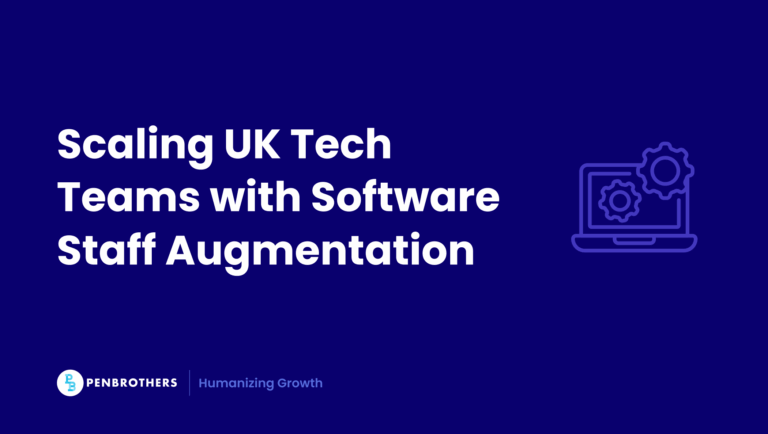When teams double in size, most people notice the Slack noise. Or the growing list of Google Docs. Or the broken onboarding spreadsheet. What they don’t notice? The quiet person behind the scenes making sure it all works. That person is often a database analyst.
While founders chase funding and managers juggle tasks, analysts build the systems that make remote growth sustainable. They map out workflows, automate reporting, and surface insights that prevent chaos before it starts.
Without them, scaling is guesswork. With them, scaling becomes a strategy.
Why Database Analysts Are Central to Remote Scale
Database analysts do more than clean up messy records.
Here’s what they really do:
- Track performance trends across teams, platforms, and time periods, pinpointing what’s working and what’s slowing teams down
- Forecast hiring needs based on task velocity, resource load, and project pipelines
- Automate administrative workflows such as onboarding tracking, contract renewals, and compliance reporting
- Improve documentation and process visibility so that knowledge doesn’t disappear with employee turnover
Database analysts turn hiring into a math problem. And they make remote operations repeatable. They don’t just clean up after growth. They guide it.
Want to understand how their scope compares to other IT roles? Browse this quick guide on types of IT roles that support modern businesses.
The Scaling Equation: What the Data Tells Us
Growth isn’t just about adding headcount. It’s about managing the hidden complexity that comes with it. When a remote team expands from 15 to 50 people, things change fast, and not always for the better.
According to Hubstaff’s 2025 productivity insights, three key trends emerge:
- Focus time increases in remote environments, up to 59.5% of the workday, compared to 48.5% for in-office teams
- But as teams grow, unproductive time rises, often due to task switching, unclear priorities, or excessive meetings
- When more than 40% of time is spent on low-impact, non-core tasks, efficiency drops and engagement suffers
These aren’t just surface-level frustrations. They’re signs of operational friction, often invisible to leadership until it’s too late.
This is where database analysts make the difference.
With the right analytics setup, they can:
- Map focus time per role, identifying where interruptions or context switching erode productivity
- Audit meetings and collaboration patterns, revealing overlap, bloat, or missed async opportunities
- Track task types and documentation usage, flagging inefficiencies that slow down onboarding or delivery
This kind of visibility turns reactivity into foresight. Instead of waiting for complaints or burnout, leaders use analyst-driven data to act early, because in scaling teams, cracks don’t show up in Slack. They show up in the numbers.
Systems Before Staff: The Analyst’s Approach to Remote Readiness
Startups often hire fast and fix later. Analysts do the opposite. They build infrastructure first. Then scale.
Here’s what that looks like in practice:
- Clean data pipelines to consolidate inputs from HR tools, productivity platforms, and project trackers
- Shared dashboards for real-time visibility into hiring status, team capacity, and operational bottlenecks
- Defined roles and reporting lines using metadata and workflow, not just org charts
- Centralized documentation and SOPs that make knowledge accessible across time zones and departments
GitLab, an all-remote company with over 1,500 staff, scaled globally by doing exactly this. They prioritize documentation, async workflows, and radical transparency, all measurable, analyst-backed systems. Before you scale headcount, scale structure.
For a deeper comparison of how GitLab stacks up against GitHub in remote collaboration and developer workflow, check out our breakdown: GitLab vs GitHub
How Data Analysts Help Navigate Remote Growing Pains
Scaling reveals your weak points. Time zones stretch communication. Roles blur. Expectations misalign. Database analysts reduce the guesswork.
They remove ambiguity from scale-up chaos. Instead of relying on instinct or after-the-fact feedback, they give leaders the data signals that matter.
Here’s how:
- Spot workload imbalances by comparing task velocity, ticket backlogs, or platform usage across functions
- Flag vague or conflicting OKRs using progress tracking and alignment checks between teams and managers
- Correlate sentiment and retention risk by analyzing engagement scores, 1:1 feedback notes, or absenteeism patterns
A well-instrumented team doesn’t just react to issues. It anticipates them.
With tools like Hubstaff, Jira, or even simple engagement pulse surveys, database analysts create dashboards that act like early warning systems. If a team’s task completion rate dips or a key engineer’s engagement score drops week after week, they’ll see the trend before it becomes a resignation.
Remote growing pains are inevitable. But suffering through them isn’t. Smart teams don’t wait for conflict. They instrument for it, making friction measurable and fixable before it escalates.
Want to know what else data analysts manage? Check out their full scope here: Data Analyst or Data Administrator?
Penbrothers’ Success Story
How Spot Ship Saved 74% on Costs and Built a Scalable Data Team Offshore
UK-based logistics tech company Spot Ship faced mounting admin work as it scaled. Hiring locally was time-consuming and costly, so they partnered with Penbrothers to offshore support roles quickly and affordably. Within weeks, Penbrothers sourced top-performing talent for data encoding and analytics, allowing Spot Ship to streamline operations without losing momentum.
One standout hire, Wilfred Guiriba, rose swiftly from analyst to Data Team Manager, leading precision-focused data processing that directly improved team output. With Penbrothers managing payroll, compliance, and retention, Spot Ship saved 73.87% per role on average while elevating internal productivity.
“The quality of their endorsements and quick turnaround time for hiring are impressive,” said COO Henry Waterfield. For Spot Ship, offshoring data roles wasn’t just a fix, it was a strategic advantage.
Essential Tools in the Analyst’s Remote Scaling Stack
Database analysts use a smart stack to stay ahead of remote complexity.
Here’s a quick breakdown:
| Tool | Use Case |
| Snowflake | Acts as the central cloud-based data warehouse, consolidating fragmented team, performance, and project data for unified analysis |
| Jira | Tracks sprint progress, team capacity, and blockers, making it easier to spot delivery risks or uneven workloads |
| GitHub | Provides version control and code transparency, enabling data lineage tracking and better collaboration between analysts and engineers |
| Hubstaff | Offers real-time metrics on time usage, focus, idle hours, and productivity trends, vital for spotting friction in remote workflows |
| Figma | Supports asynchronous design collaboration, where analysts can review project flows and UI dependencies across time zones |
| Looker/Tableau | Transforms raw data into live dashboards, visual alerts, and executive summaries for strategic decision-making |
These tools create visibility. And visibility makes scaling safer.
Final Thoughts
Most teams wait too long to bring in data talent. They think analysts are for late-stage ops, but by then, it’s cleanup, not strategy.Penbrothers helps you hire smart from the start. Whether you need a database analyst or a full support team, we’ll connect you with vetted talent that turns growth into a system. Let’s build your team.






